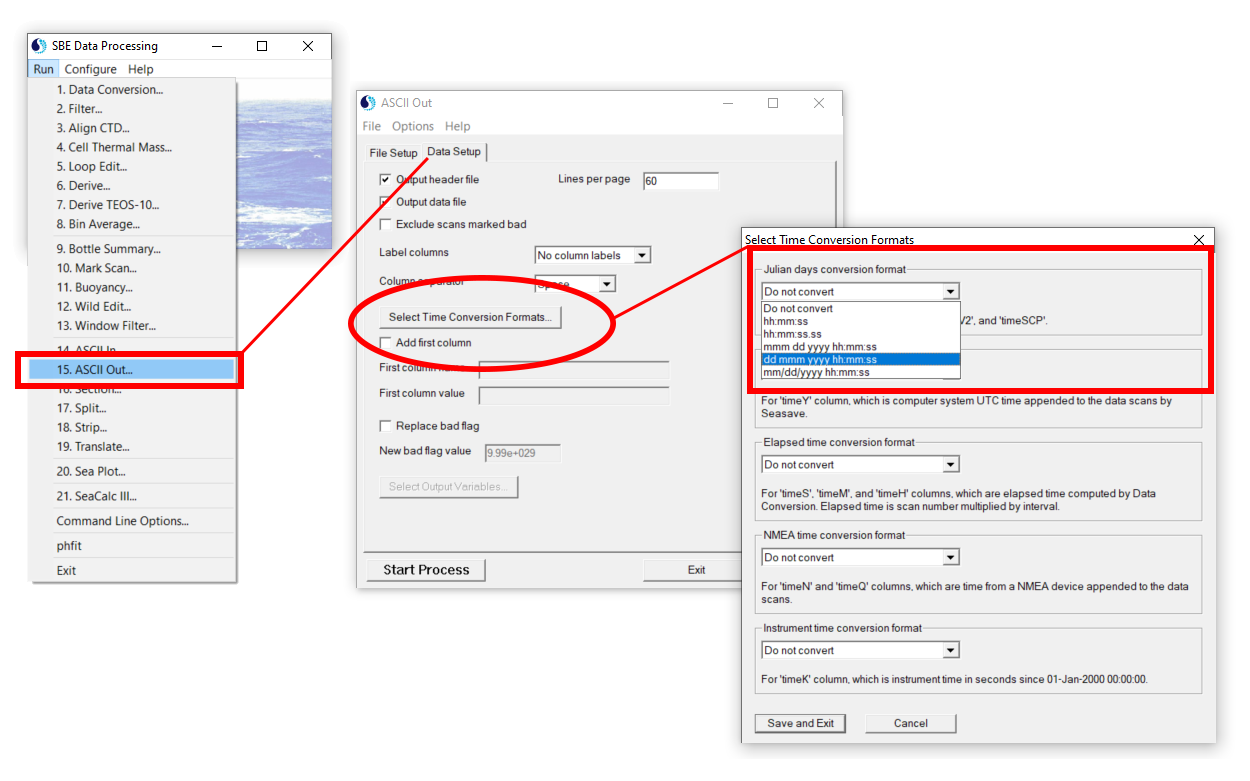Exporting “Time, Elapsed: Julian Days” from CTD data provides a count of days since Midnight on Jan 1 of that year, as referenced to the CTD’s timestamp. Some examples:
- Midnight on January 1st: timeJ = 1
- Midnight on January 2nd: timeJ = 2
- Midnight on February 1st: timeJ = 32
- Noon on February 1st: timeJ = 32.5
To convert to a standard time format with a deployment starting in 2020
- Sea-Bird Data Processing: Use Time conversion in ASCII out
- In Excel: 1/1/2020+timeJ-1
- In matlab: datenum(2020, 1, 1)-1+timeJ
- In Python: d = datetime.date(dyear, 1, 1) + datetime.timedelta(yday - 1)
- In R: time1 <- ISOdatetime(year, 1, 1, 0, 0, 0, tz='UTC') + (jday - 1)*86400
However, beware that the timeJ is referenced against the timezone of the instrument which can either be local or UTC
# start_time = Feb 25 2019 12:00:01 [Instrument's time stamp, first data scan]

